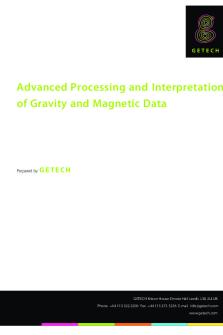Salting and smoking- food processing PDF

| Title | Salting and smoking- food processing |
|---|---|
| Course | Food, Nutrition and Dietetics |
| Institution | University of Nairobi |
| Pages | 2 |
| File Size | 47.9 KB |
| File Type | |
| Total Downloads | 46 |
| Total Views | 160 |
Summary
Salting and smoking notes on food processing and preservation for diploma students....
Description
SALTING AND SMOKING Curing involve the application of salt, sugar, nitrate and nitrite to prolong the quality of foods. Functions of salting and smoking
Shelf life extension Development of unique properties. Controlling microbial growth. Resistance to rapid deterioration.
Smoking not only imparts a wonderful aroma to food, it also acts as a preservative. Heat produced by the smoking helps to dry the food and keep harmful water depended microorganisms from growing and multiplying. Chemicals produced by the smoke kill insects/eggs Smoking generally follows salting. Types of smoking i. cold smoking Cold smoking is the traditional method used in the smokehouse where the heat source is off. Controlled smoke flow is blown over the food. It is often used with foods that have been salted. It does not cook the cured meat rather, it helps to increase its dryness and keeps it from turning rancid while at the same time giving it that characteristic of smoky flavor. The temperatures used for cold smoking are between 20 to 30˚c. Cold smoking alone is not sufficient for preserving foods as cold smoking does not cook food. Hot smoking Food exposed to smoke and heat in a controlled environment. Controlled heat and smoke application over a long period of time. Food cooks and smokes evenly, rendering fully cooked and smoked. In hot smoking foods are fully cooked. Hot smoking is carried out in temperatures that are within the range of 52 and 80˚c Effects of smoking on foods
Smoking changes the colour of the preserved foods e.g in meats it makes meat shine and appear redder and more appealing. It enhances the smell and flavour of food being smoked, making it appetizing It helps to extend shelf life of the food items. Prevents fats from becoming rancid and prevents molds from growing Smoking contaminates food with polycyclic aromatic hydrocarbons (PAH) when food is smoked Nutrient loss of thiamin and vitamin C
Salting Salting is the preservation of food with dry edible salt. It is related to pickling in general and more specifically to brining (preparing food with brine that is in salty water). Salting is a form of curing. It preserves food by lowering its moisture content through the process of osmosis. Methods of salting Dry salting salt is directly applied on to the surface of food eg fish or meat. Brining food to be preserved is immersed in salt/water solution Mixed salting. Effects of salting on food
Salt has a profound effect on the gelatinization of proteins, which occurs in cheese production and many processed types of meat such as sausages. Salt is a flavour enhancer- it creates a salty falvour element Salts helps to enhance the color of processed meats....
Similar Free PDFs

Food Biochemistry and Food Processing
- 901 Pages

Food processing
- 4 Pages

Food processing - Class notes
- 8 Pages

Health Belief Model and Smoking
- 4 Pages

Ado and teens smoking essay
- 6 Pages

Processing
- 3 Pages

Smoking & Adolescents Essay
- 11 Pages

Smoking ban - An essay
- 6 Pages
Popular Institutions
- Tinajero National High School - Annex
- Politeknik Caltex Riau
- Yokohama City University
- SGT University
- University of Al-Qadisiyah
- Divine Word College of Vigan
- Techniek College Rotterdam
- Universidade de Santiago
- Universiti Teknologi MARA Cawangan Johor Kampus Pasir Gudang
- Poltekkes Kemenkes Yogyakarta
- Baguio City National High School
- Colegio san marcos
- preparatoria uno
- Centro de Bachillerato Tecnológico Industrial y de Servicios No. 107
- Dalian Maritime University
- Quang Trung Secondary School
- Colegio Tecnológico en Informática
- Corporación Regional de Educación Superior
- Grupo CEDVA
- Dar Al Uloom University
- Centro de Estudios Preuniversitarios de la Universidad Nacional de Ingeniería
- 上智大学
- Aakash International School, Nuna Majara
- San Felipe Neri Catholic School
- Kang Chiao International School - New Taipei City
- Misamis Occidental National High School
- Institución Educativa Escuela Normal Juan Ladrilleros
- Kolehiyo ng Pantukan
- Batanes State College
- Instituto Continental
- Sekolah Menengah Kejuruan Kesehatan Kaltara (Tarakan)
- Colegio de La Inmaculada Concepcion - Cebu







